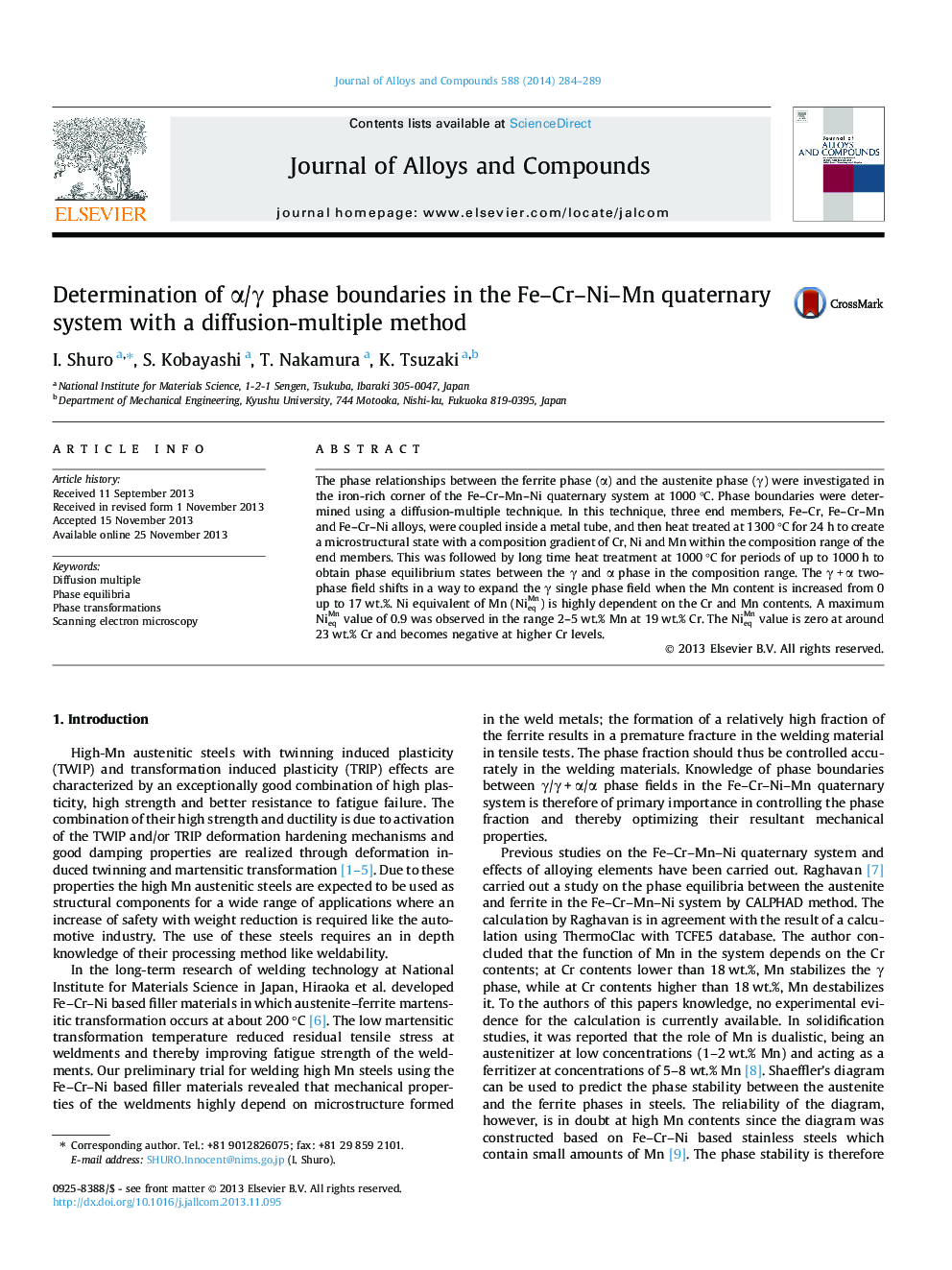| کد مقاله | کد نشریه | سال انتشار | مقاله انگلیسی | نسخه تمام متن |
|---|---|---|---|---|
| 1612183 | 1516305 | 2014 | 6 صفحه PDF | دانلود رایگان |
عنوان انگلیسی مقاله ISI
Determination of α/γ phase boundaries in the Fe-Cr-Ni-Mn quaternary system with a diffusion-multiple method
دانلود مقاله + سفارش ترجمه
دانلود مقاله ISI انگلیسی
رایگان برای ایرانیان
کلمات کلیدی
موضوعات مرتبط
مهندسی و علوم پایه
مهندسی مواد
فلزات و آلیاژها
پیش نمایش صفحه اول مقاله

چکیده انگلیسی
The phase relationships between the ferrite phase (α) and the austenite phase (γ) were investigated in the iron-rich corner of the Fe-Cr-Mn-Ni quaternary system at 1000 °C. Phase boundaries were determined using a diffusion-multiple technique. In this technique, three end members, Fe-Cr, Fe-Cr-Mn and Fe-Cr-Ni alloys, were coupled inside a metal tube, and then heat treated at 1300 °C for 24 h to create a microstructural state with a composition gradient of Cr, Ni and Mn within the composition range of the end members. This was followed by long time heat treatment at 1000 °C for periods of up to 1000 h to obtain phase equilibrium states between the γ and α phase in the composition range. The γ + α two-phase field shifts in a way to expand the γ single phase field when the Mn content is increased from 0 up to 17 wt.%. Ni equivalent of Mn (NieqMn) is highly dependent on the Cr and Mn contents. A maximum NieqMn value of 0.9 was observed in the range 2-5 wt.% Mn at 19 wt.% Cr. The NieqMn value is zero at around 23 wt.% Cr and becomes negative at higher Cr levels.
ناشر
Database: Elsevier - ScienceDirect (ساینس دایرکت)
Journal: Journal of Alloys and Compounds - Volume 588, 5 March 2014, Pages 284-289
Journal: Journal of Alloys and Compounds - Volume 588, 5 March 2014, Pages 284-289
نویسندگان
I. Shuro, S. Kobayashi, T. Nakamura, K. Tsuzaki,